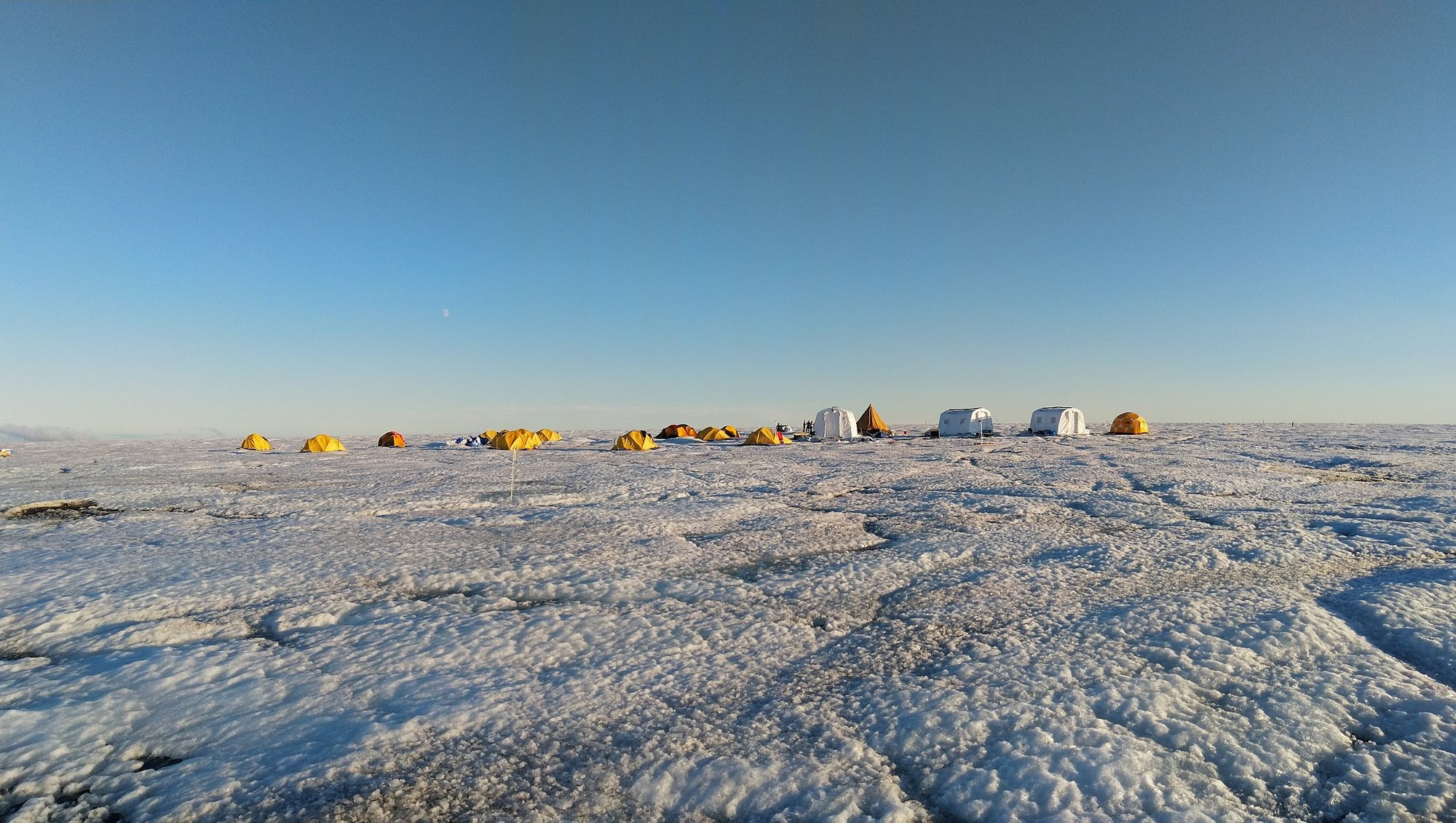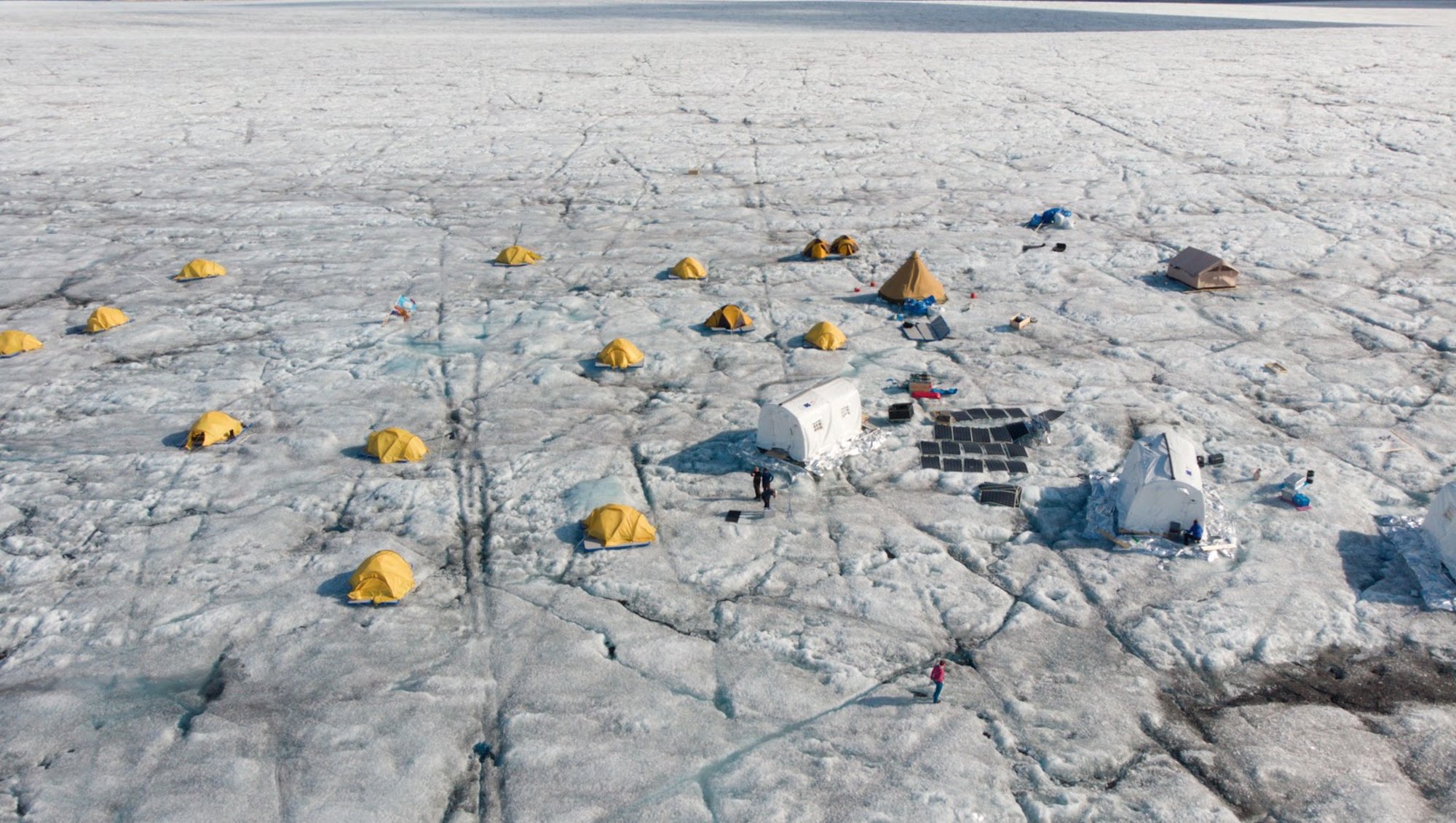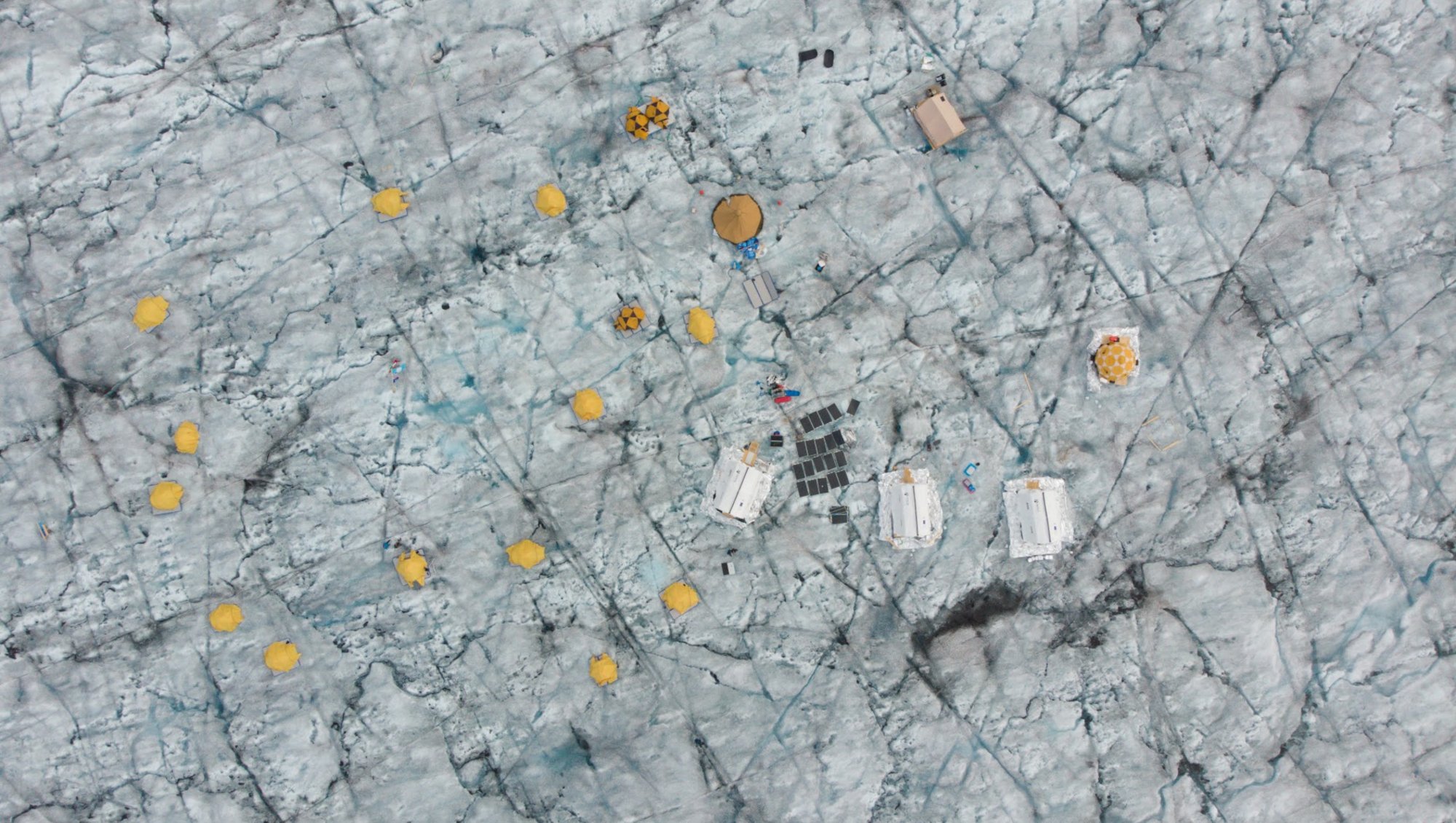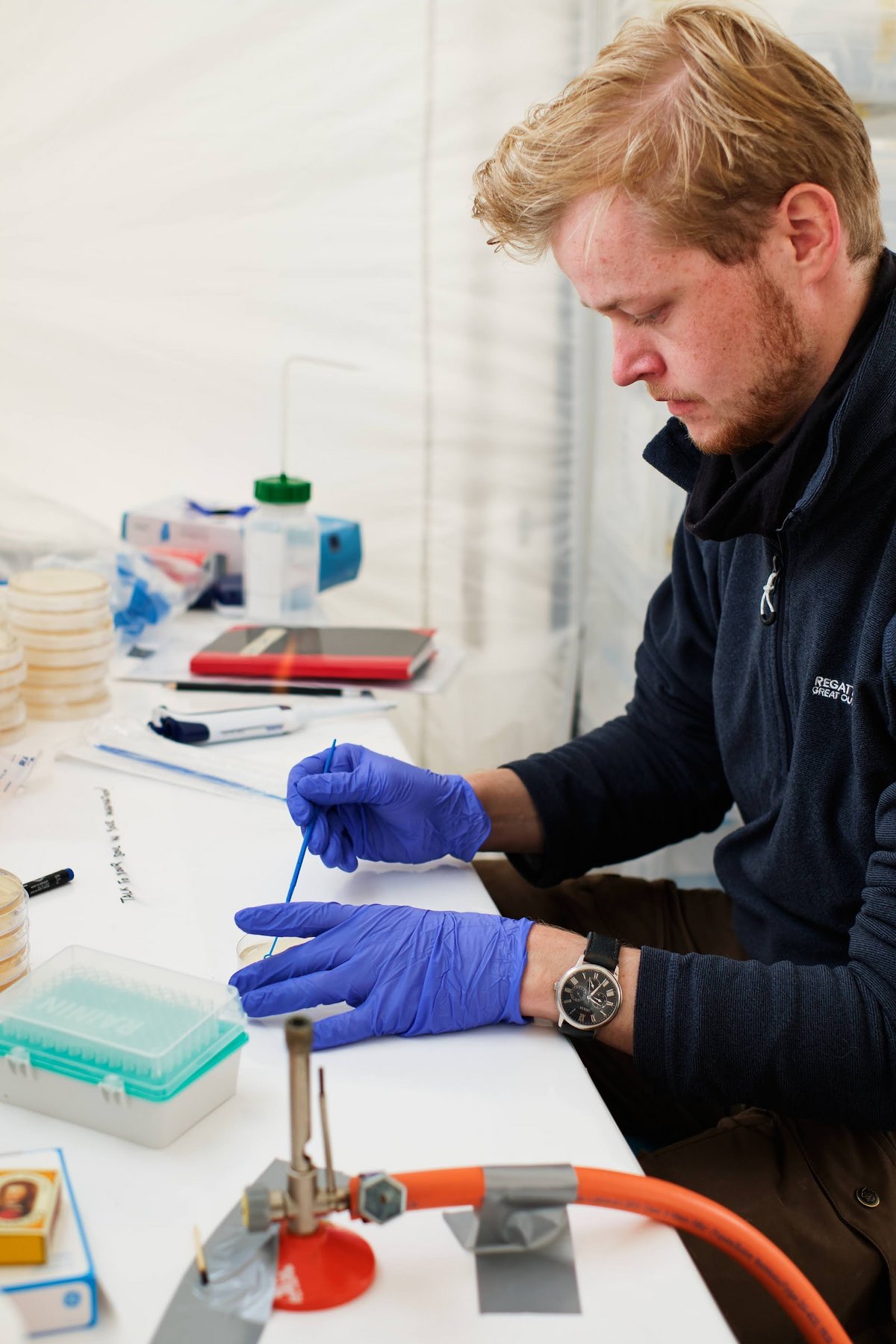Young scientist writes best research paper of the year: Developed new method to cultivate microbes on the ice
The reputed journal FEMS Microbiology Ecology chose a paper from Ph.D. student Ate Jaarsma from Aarhus University as the best research of 2023.
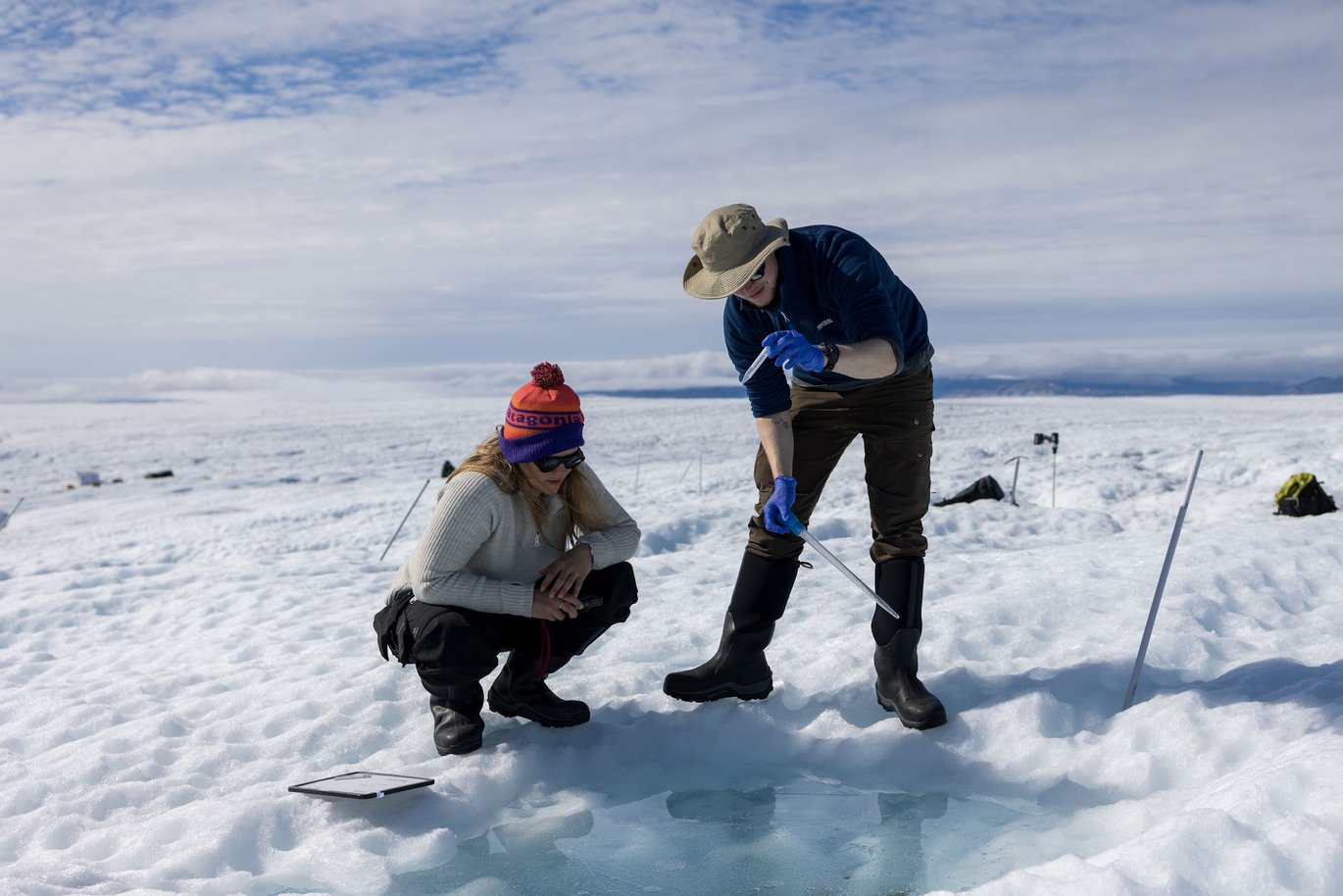
Ate Jaarsma is originally from The Netherlands, but his research takes place much further North on the freezing ice sheet of Greenland.
Here, he studies the microorganisms living on the ice sheet. A research area that has expanded rapidly in recent years, because new genomic technology has given the researchers better tools to study this microscopic world.
Past studies have shown us that the ice sheet isn’t a cold desert without a trace of life, as was earlier believed. They are in fact teeming with microscopic life. Algae, fungi and bacteria that take advantage of the sunlight and nutrients in the melting ice.
Researchers today make use of these new genomic technologies, but as is often the case with new technology, we constantly discover new ways to use and combine the new technologies. And that is exactly what Ate Jaarsma has done.
When studying microorganisms on the ice sheets most researchers choose between two different genetic techniques: metagenomic sequencing or amplicon sequencing. But few use both techniques simultaneously to study their pros and cons. That is until Ate Jaarsma showed up.
But not only did he map out the strengths and weaknesses in existing genomic techniques, he also developed a whole new way of cultivating bacteria on the ice, to see what’s hiding in the melting pools.
The combination of these things is what earned him the prize of the best research paper of the year in the journal FEMS Microbiology Ecology.
Yellow Tents on the Ice
To test out the different genomic techniques Ate Jaarsma traveled to Greenland to camp out on the ice. Staying in yellow tents placed on mats for insulation against the cold melting ice below, he began taking samples.
Some of the samples he brought straight back to analyze and sequence in the laboratory. Others he tried to cultivate on the ice right away with his new approach.
- People have developed these culturing chips for studying bacteria in soil and water when you’re in the field. It’s called “in situ cultivation”. But no one had done it on the ice before. To get it to work I had to come up with a special design. I modified the technology and made these plastic culture chips, he says and continues:
- A lot of microorganisms don't like to grow in the lab. That means you often get a wrong picture of the diversity of microbes in the area you collected the sample from. But if you start culturing them in their natural environment you get a different picture.
The plastic culturing chips are placed in the meltwater in cryoconite holes or on the ice where the microorganisms live. The idea of culturing them in their natural environment is to expand the diversity of organisms that we can study, by providing them with their natural growth medium.
After that was done, Ate Jaarsma took these samples to the lab to keep growing them and sequence their DNA.
- What I developed is a proof of concept. I showed it’s possible to do it on the ice sheet. I cannot say it’s more effective than conventional culturing yet, but it is another tool in the tool belt, he says.
A Frozen Surprise
Even though Ate Jaarsma is mostly focused on capturing microbial diversity to study the compounds that these microbes make, he also discovered something interesting about the microbial ecology and the ice sheet.
Every year in summer, dark ice algae bloom on the ice surface. Because of their darkening effect, they accelerate the melting of the ice sheet.
- I confirmed that ice algae are dominating the ice surface, whereas other habitats on the ice sheet, such as cryoconite holes, are dominated by bacteria.
- It was interesting to find some other microbes associated with the algae. For example, I showed that a type of fungi was abundant on the ice too. We suspect this fungus to be an important control on ice algae growth, but we need to study them more to see if they are a limiting factor of these blooms.
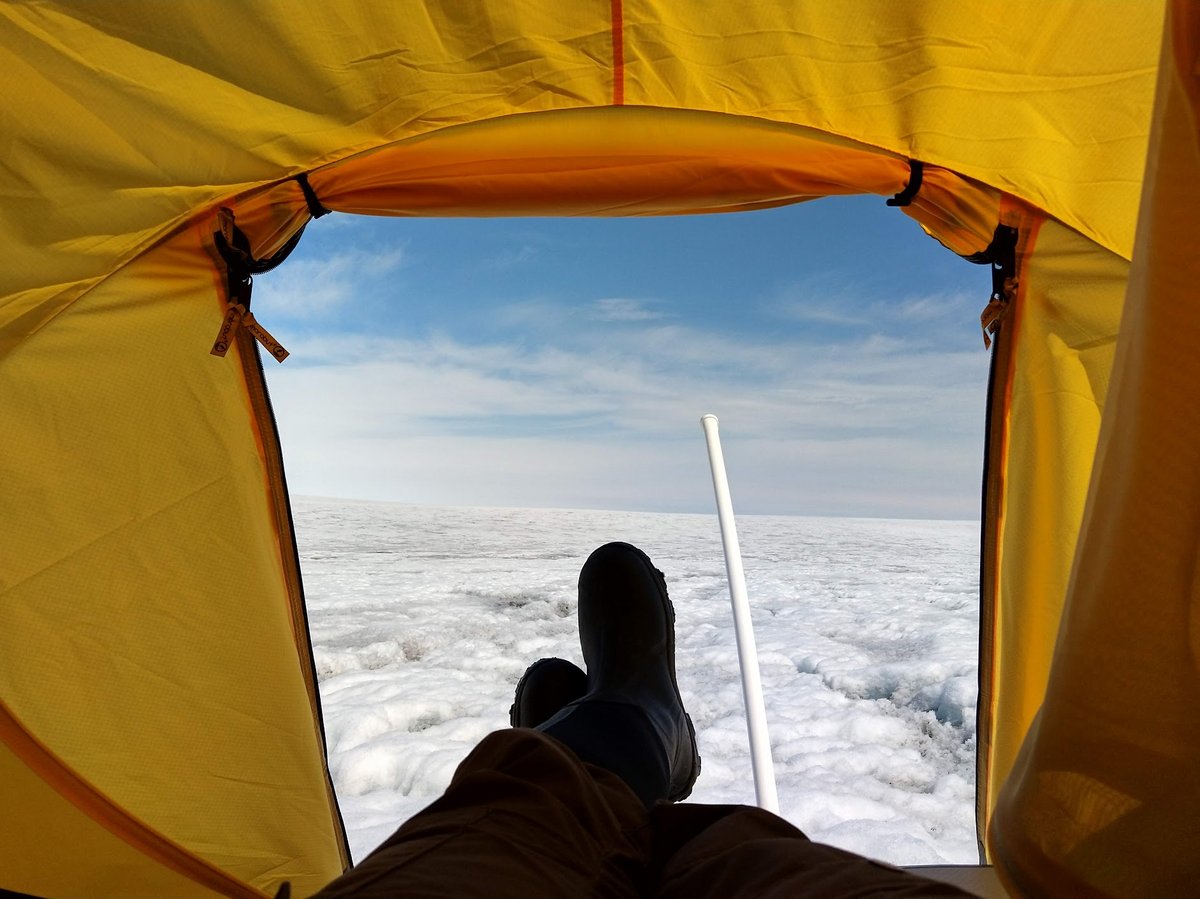
Didn’t See it Coming
Ate Jaarsma has just handed in his Ph.D. thesis. Now he’s looking for a postdoc position to continue his research, and those jobs are not easy to find.
So when he heard a couple of weeks ago that his paper was selected as the best of 2023, he was very happy.
- I was pretty surprised. The paper was selected as an editor's choice when it was published, but I hadn’t expected this. It was a nice moral booster while writing the final paragraphs of my dissertation.
- I hope that the prize will help me secure funding for a postdoc fellowship somewhere. I’m staying at Aarhus University until June, but after that I have no plans yet. We’ll see what happens.
About the research
Type of study:
Field experiments
External funding:
This research received funding from the European Research Council (ERC). The research is a small part of the EU-project Deep Purple.
Conflicts of interest:
The authors declare no conflict of interest.
Link to the scientific paper:
Exploring microbial diversity in Greenland Ice Sheet supraglacial habitats through culturing-dependent and -independent approaches
Contact info:
Ate Jaarsma
Ph.d.-student
Department of Environmental Science, Aarhus University
Email: ahj@envs.au.dk
Jeppe Kyhne Knudsen
Journalist and science communicator
Faculty of Technical Sciences, Aarhus University
Email: jkk@au.dk
Phone: +45 93 50 81 48

